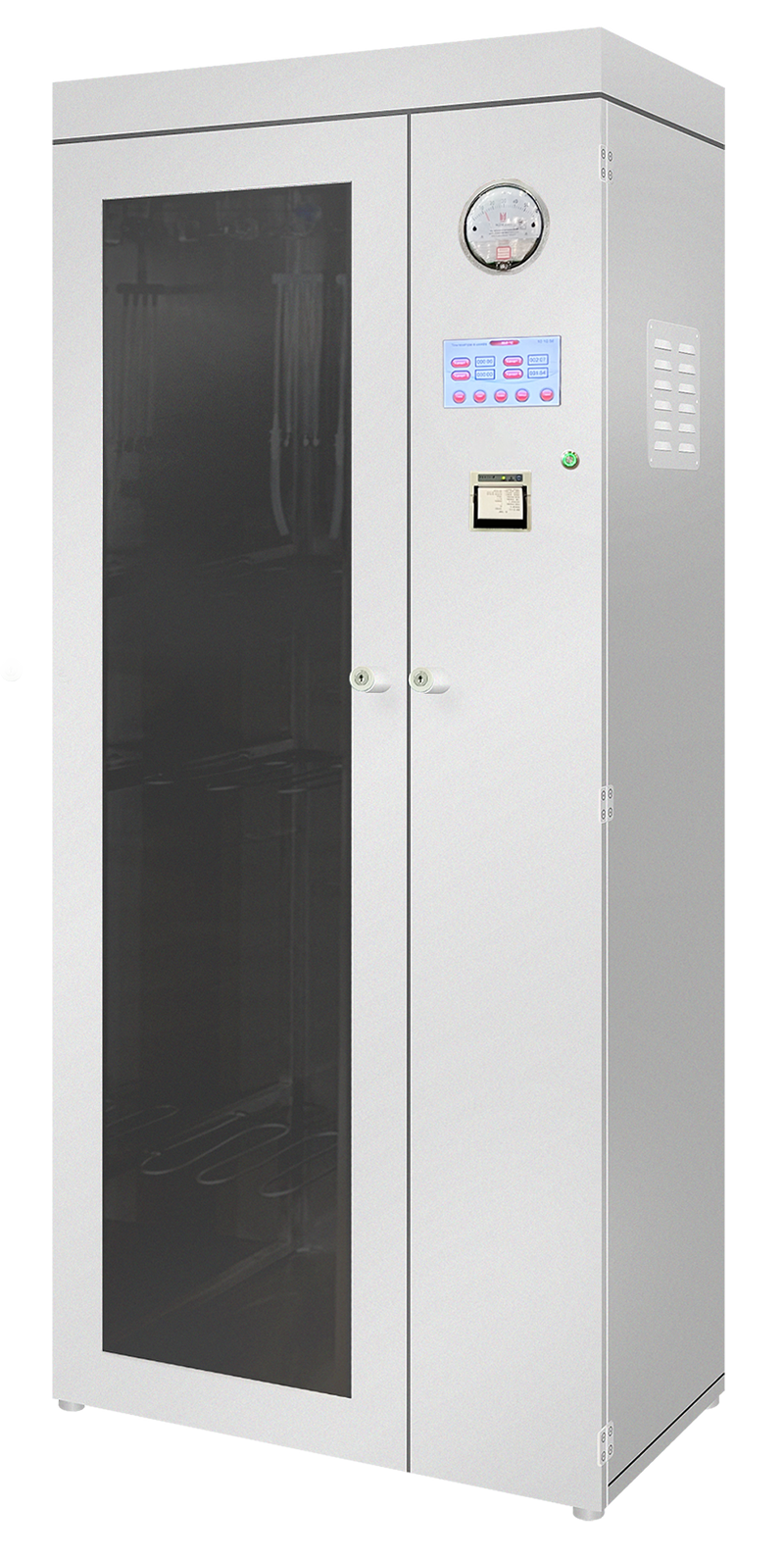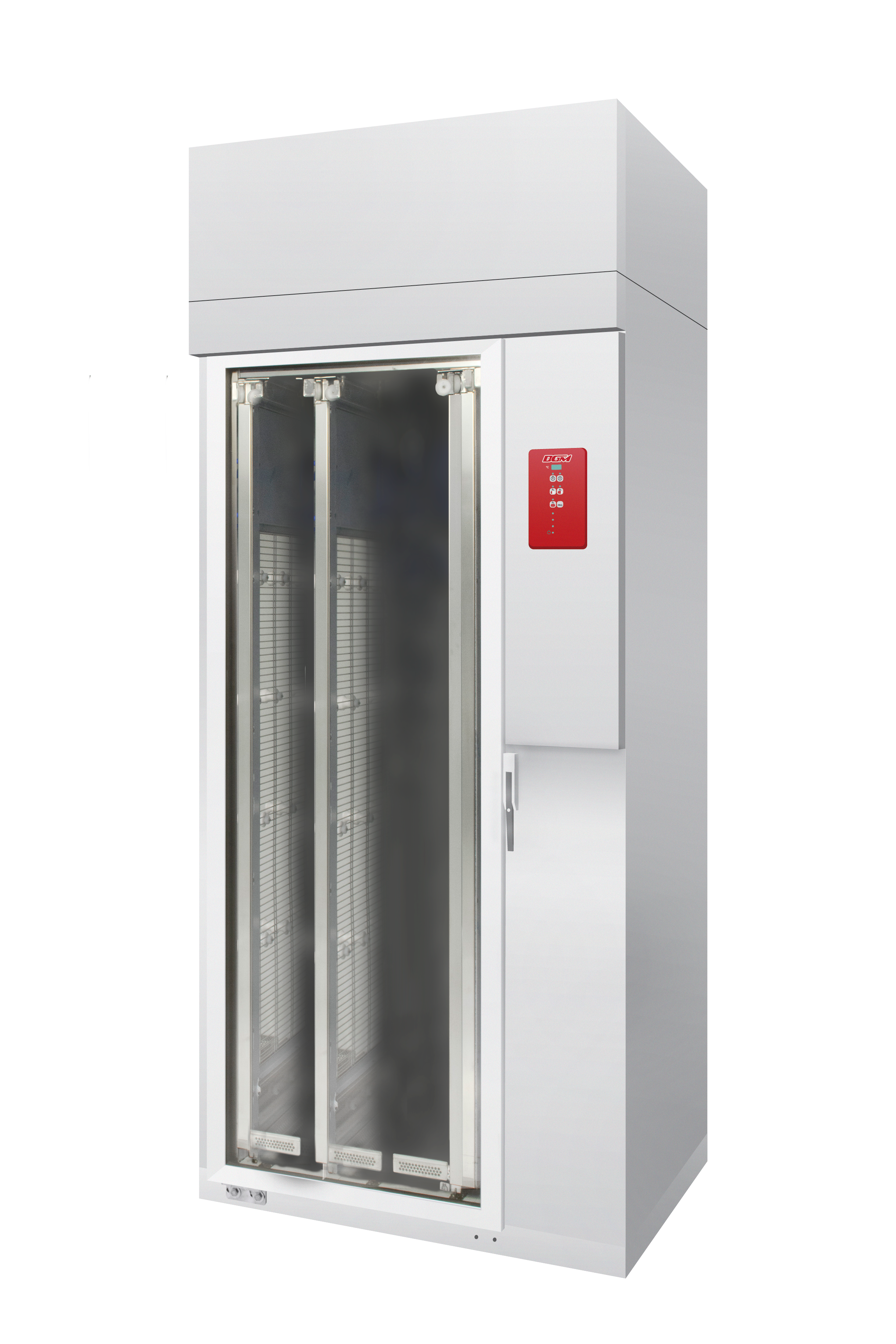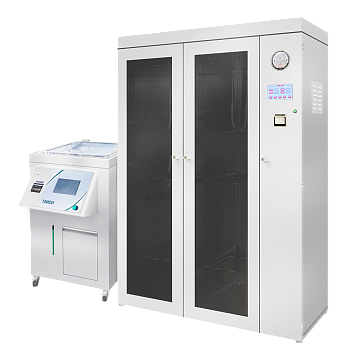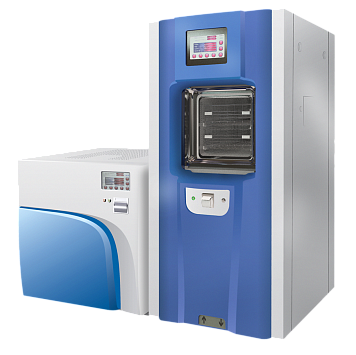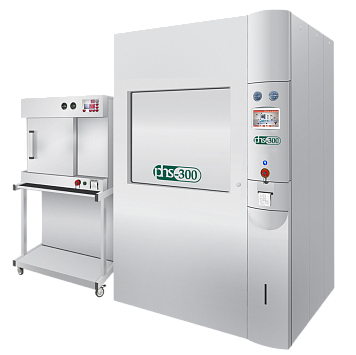The cabinet is intended primarily for long-term storage of sterile, that is, treated and disinfected (HLD) endoscopes between operations and examinations (for both non-sterile and sterile / intraoperative interventions), mainly flexible endoscopes (gastroscopes, colonoscopes, etc.).
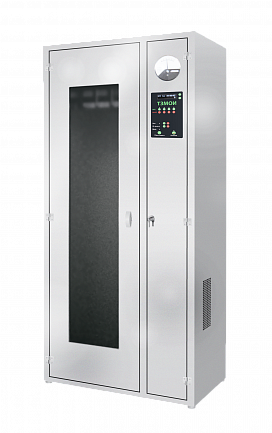
The containers and compartments of some models can also conveniently store rigid endoscopes and some other medical instruments and equipment, including, for example, endoscopic tools.
Main purpose of the flexible endoscope storage cabinet:
-
Extend the shelf life of sterile endoscopes
-
Eliminate the need for a repeated treatment of endoscopes before surgery / examination (if more than 3 hours have passed since the end of the HLD process)
-
Increase the life of endoscopes and reduce their wear and tear by reducing the number of mechanical and chemical treatments
Endoscope Drying and Storage Cabinets
Modern models of endoscope cabinets also perform the function of drying (and at the same time cooling and disinfection of external and internal surfaces, including the endoscope channels (here flexible endoscopes are implied).
A system for pumping warm (sometimes up to 45 degrees Celsius) filtered air is connected to all channels and valves through special adapters.
The integrated endoscope drying and storage system in the cabinet makes it possible to:
-
Place endoscopes in the cabinet almost immediately after treatment
-
Reduce the time spent by the clinic staff on drying and treatment operations
-
Accelerate the removal of moisture from the channels
-
Virtually eliminate the possibility of re-contamination and the formation of bacterial colonies, even if they only slightly hit the surface of endoscopes at the last stages of treatment (which is the most likely of all unwanted scenarios)
-
Reduce the temperature inside the endoscope channels (along with this, the likelihood of re-contamination decreases).
Storage time for sterile endoscopes in the cabinet
3–7 days is the average duration of safe storage of endoscopes in the cabinet with maintaining the sterility (that is, excluding the possibility of repeated decontamination) of all external and internal surfaces, including the endoscope channels.
In most manufacturer documents, instructions and descriptions (including many domestic and some foreign endoscopic cabinets) the figure is exactly 7 days.
The storage period for sterile endoscopes in cabinets is determined by the following factors:
-
The manufacturer's safety policy: the desire to be on the safe side and knowingly limit / reduce the permissible period for placing tools and equipment in their cabinets. For example, the endoscopic equipment manufacturer Olympus specifies a period of 72 hours (i. e. 3 days) in its EDC series cabinets.
-
The quality of built-in filters and irradiators
-
Drying system
-
Overpressure system
Despite an approximately similar structure and technologies used (with some exceptions, of course), various manufacturers guarantee 3–7, 14 days and even up to 30 days (DGM).
After the expiration of the time specified in the manufacturer's recommendations, the cabinet must be completely unloaded and re-treated to maintain sterility.
Design and principle of operation of the cabinet for storing and drying endoscopes
By default, most cabinets are designed specifically for storing flexible endoscopes, taking into account their significant length and predominantly vertical arrangement (as recommended by most manufacturers, including Olympus, Pentax, etc.).
Dimensions
As a rule, a cabinet for storing endoscopes is a parallelepiped stretched upwards (specifically for a natural vertical arrangement of endoscopes).
Most vertical cabinets are designed to accommodate endoscopes of up to 1.5 meters in length. Therefore, the height of the cabinets is on average identical and slightly exceeds this figure. Devices exceeding these dimensions are placed on special additional brackets in a serpentine course, excluding strong bends and contacts with the bottom surface of the cabinet / other endoscopes.
However, there are also horizontal cabinets, where endoscopes are stored rolled up in special boxes or cases (in much the same way as in the factory shipping cases upon delivery). Moreover, such horizontal cabinets are equipped with special boxes (they do not have a common internal space for all endoscopes), which may also include a drying system.
The depth of endoscopic cabinets does not generally exceed the parameters of ordinary medical furniture, and the width (length) of the cabinet depends on the number of endoscopes: cabinets for 10 to 12 endoscopes can be quite long.
Endoscope holders
Special brackets or holders for flexible endoscopes are only available in vertical cabinets (in the upper part of them), where they are mandatory. Disinfected endoscopes are hung on these brackets by the handle body (with controls) in exactly the same way as on a standard endoscopic stand.
Body material
Most cabinets are made of stainless steel, often powder coated, however, there are also other cabinet materials.
Windows (transparent doors)
The cabinet doors usually have windows (made of hypoallergenic polycarbonate or fireproof glass) to check the fullness and availability and to select the endoscope even before opening the door, thus minimizing the contact between the internal space and the external environment.
Access protection, alarm, automation (controller)
Most cabinets are equipped with a key or coded magnetic lock, possibly a barcode scanner, QR code or RFID reader to prevent access or accidental opening of their doors.
At the same time, an alarm system and a microcontroller for collecting information from various internal sensors, such as pressure, temperature, humidity, door opening sensors, and an endoscope storage timer are also built in cabinets with advanced functionality. The alarm is triggered in case of accidental / unauthorized opening of the door, violation of any of the mode parameters, or the expiration of the endoscope storage time.
The microcontroller can also keep track of who exactly opened the cabinet, which endoscope was placed / removed, at what time, and save all this information in the built-in log / send to the hospital server / to a special software environment (for example, the software package and the system for integrating endoscopic equipment Endoalpha by Olympus).
Display, printer, connection interfaces
Premium models are also equipped with a display for displaying time, operating mode, information about endoscopes and employees, and a printer (usually a thermal printer) for printing data.
Considering all smart functions of modern endoscopic cabinets, they must be connected not only to the household electrical network (power supply), but also need network access (Ethernet) for data transmission, and in some models a connection to PC, including for diagnostic and service purposes and data exchange.
Air recirculation and purification system
The cabinet case includes coolers (fans) for air intake from the environment and special HEPA filters for cleaning this air. Of course, filters must be changed in a timely manner, otherwise the cabinet will not only fail to fulfill its direct function, but will also be a source of the spread of bacteria and microorganisms.
Air disinfection systems
System of bactericidal (disinfecting) lamps are provided inside the cabinet – immediately in the endoscope storage chamber or in a separate compartment. It is important that such a system excludes the possibility of ozone formation.
The option of placing the lamps in a separate housing is preferable, since it excludes the effect of radiation on the rubber of the working part (insertable tube), the distal end and the universal cable (connector part) of the flexible endoscope, increasing the endoscope service life. Long-term exposure to such radiation over time changes the structure and properties of the endoscope sheaths, leading to the need for their premature replacement.
Classification of endoscope cabinets:
- Vertical / horizontal
- Qty of endoscopes:
-
2–3
-
4–6
-
10 or more
- The availability of a device for drying the endoscope channels
-
for storage
-
for storage and drying of endoscopes
- The way the germicidal lamp system is built in
-
open
-
closed (in a separate chamber or case)
-
Through / one-sided
- The availability of additional systems - alarm, locking, temperature control, pressure, etc.
For more detailed information about the equipment, you can contact us using any of the methods specified in the "Contacts"



